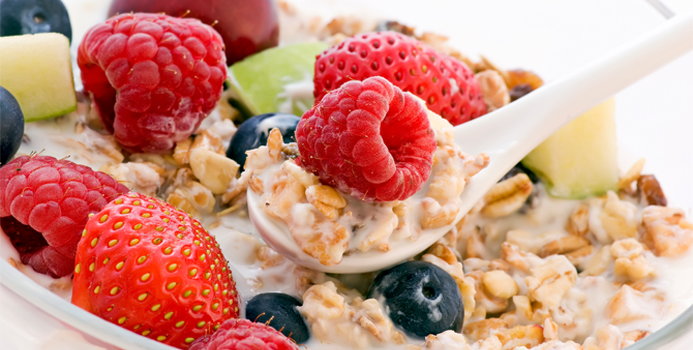Making lifestyle changes doesn't have to be traumatic; choose healthy alternatives to the foods you already enjoy for an easy transition. Switch out white food products, like rice and breads, for whole wheat varieties. Whole wheat breads, brown rice and other whole grains are not only higher in fiber, they're also less processed and more flavorful.
The Benefits of More Fiber
Whole grain foods have more naturally occurring fiber than their white counterparts. Dietary fiber is the indigestible part of plants that doesn't get turned into calories. Even though the human body doesn't use fiber as a fuel source, it's an essential part of your diet. Fiber helps move food and waste products through your digestive tract and reduces the likelihood of constipation and hemorrhoids. The consumption of a diet rich in fiber has been linked to a decrease in bad LDL cholesterol and a reduction in heart-disease. Diabetics and people watching their sugar consumption also benefit from high fiber foods since your body digests the food more slowly, thereby reducing spikes in blood sugar.
It's easy to eat a mountain of regular pasta without blinking an eye, but replace those noodles with a whole wheat variety and you may find that half the amount is all you need. Because whole grain products are higher in fiber they are also more filling and you need less of them to feel satisfied. Ultimately this means you'll consume fewer calories, helping you reach and maintain a healthy body weight.
Whole Grain Means Less Processed
Unfortunately, the processing of wheat used to create white foods strips away vitamins and nutrients: more than half of wheat's vitamin B, 90% of vitamin E, 80% of iron and about 50% of calcium are removed during the process. Food producers try to add these vitamins back in, but these unnatural sources are not as easily absorbed and digested by the body.
Processing also requires the use of chemicals to change the color and texture of the naturally brown wheat plant. To achieve the super-white color of white breads, the grain is bleached using a variety of chemicals. Ultimately, this leaves a residue on the product that you then consume.
Richer Taste & Texture
Although you may be more accustomed to white products, whole grain foods have a richer, more flavorful taste. Whole wheat breads often have a sweet, earthy flavor that can add more depth to seemingly boring sandwiches. The chewier texture of brown rice is more satisfying in your mouth and offers a nutty flavor that goes well with almost any type of cuisine.
Easy Swaps
If you're ready to make the switch, some simple changes at the grocery store is all it takes. Swap white bread for whole grain versions. If you're a baker, replace half the white flour in your recipes with whole wheat flour. Buy brown rice instead of white; although be forewarned that dried brown rice takes a little longer to cook. If you lack time, buy parboiled brown rice, which is ready in about 10 minutes. Whole wheat pastas have come a long way over the years and are great with all types of sauces.



